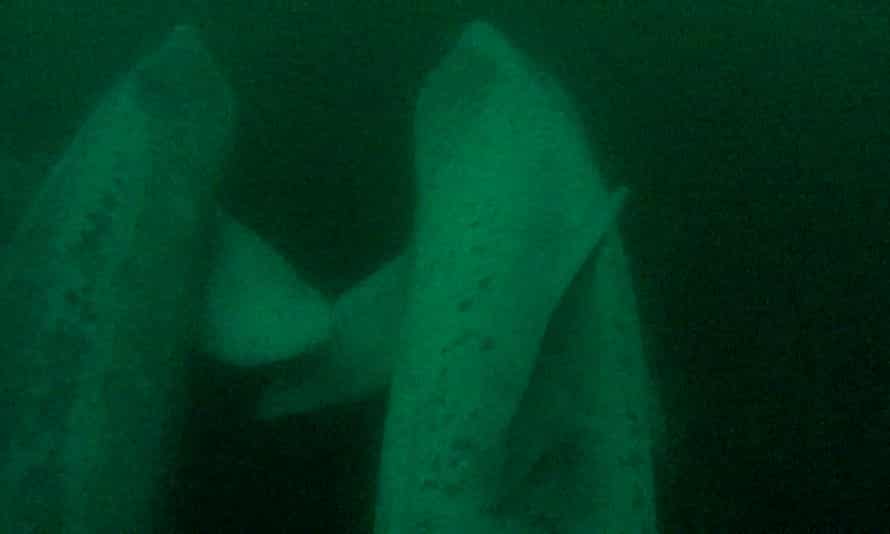Sexy secret life of basking sharks uncovered in Hebrides
Scientists record fin-to-fin contact in gentle giants, most likely part of courtship, for first time
Fin-to-fin synchronised swimming, thought likely to be part of courtship, has been seen in groups of basking sharks for the first time. Video cameras attached temporarily to the sharks gave scientists an unprecedented view of their hitherto secret underwater world.
The gentle giants are usually solitary creatures and virtually nothing is known about their breeding behaviour. The researchers also recorded one shark shooting out above the water, the first time a full breaching has been captured from the shark’s point of view. This may also be part of wooing a mate, perhaps by showing off the fish’s size.
Basking sharks are found in temperate water around the world, but are endangered, after being hunted in the past for the oil in their huge livers. They are the second largest fish in the ocean, with adults usually reaching 8 metres in length.
The scientists carried out their study in the Sea of the Hebrides, off the Scottish islands of Coll and Tiree. The site was known to attract the fish to feed in the summer and in December was declared a marine protection area, the first in the world to be designated specifically to protect basking sharks.
“One of the most exciting times in my career on basking sharks was seeing that footage of them all grouped together on the seabed,” said Matthew Witt, of the University of Exeter, in south-west England. “It was utterly phenomenal – you just don’t think of them doing that.”
“It’s been really fascinating to have this incredible insight,” said Jessica Rudd, also at the University of Exeter and who led the fieldwork. “It feels like a privilege to get a shark’s eye view into what they get up to. There were large congregations of the sharks, just swimming very slowly, side by side, or on top of each other, or nose-to-tail swimming, their fins touching, and in groups of up to 13.”

Copulation was not captured on camera but Witt said that, based on behaviours seen in other sharks, these congregations and social behaviours are often what precedes mating.
“It could be that feeding in these [food] hotspots also gives the opportunity for these solitary sharks to meet other sharks,” said Rudd. Scientists have been tagging animals for a long time, she said, but usually data is recorded once a day or only when a satellite tag breaks the surface.
“With video cameras, it is essentially around the clock,” she said. This means scientists cannot only determine where a shark is but also why it is there.
Breaching uses a lot of energy, especially for giants like basking sharks. Various reasons have been suggested for the behaviour, such as dislodging parasites or even just for fun, but courtship is another explanation.
“It’s a really eerie video, where the shark emerges from a depth of 77 metres and then reaches the surface in 70 seconds and breaches,” said Rudd. “We can see it fully out of the water and these are sharks that reach up to over a tonne in weight.”
Other research by the group, using Fitbit-like tags, showed basking sharks can breach four times in 45 seconds.
The researchers were also surprised to find the sharks spent up to 88% of daylight hours near the seabed, rather than near the surface where they mostly fed. Such information could be useful when considering whether to restrict fishing activity such as bottom trawling.
The research was published in the journal Plos One and followed six sharks for a cumulative total of 123 hours. The cameras were attached to the sharks using a darting pole and weighed just 300g in the water. The sharks quickly resumed normal activity within minutes and the cameras automatically detached and floated to the surface after a few days. More cameras will be attached to the sharks this summer.
Suz Henderson, at NatureScot, said: “The group behaviours described in this work, as well as the habitats the behaviours are associated with, could well be important in answering the key conservation question of where these sharks breed.”